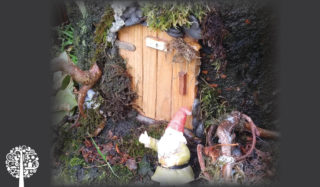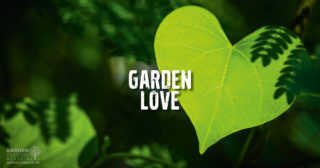As Canadians continue to celebrate the Year of the Garden (YOTG), the Canadian Garden Council encourages all garden enthusiasts, from beginners to experts, to register and share what their gardens mean to them.
How To Register
Go to livethegardenlife.ca, fill out the form, upload a picture of your garden, and receive a downloadable certificate as a keepsake to print, laminate, or frame.
There are eight theme categories and no rules. Choose one or more to describe what your garden means to you.
- Pandemic Celebration Garden: sanctuaries of comfort and peace throughout the Covid-19 health crisis.
- Red Celebration Garden: red is the theme color of the YOTG, and the Canadian Garden Council encourages gardeners to plant something red as a tribute to lives lost during the pandemic, to honor frontline workers, or as an expression of Canadian garden pride.
- Therapeutic Celebration Garden: spaces that rejuvenate mind, body, and spirit.
- Edible Celebration Garden: vegetables, herbs, berry bushes, and fruit trees are home in these gardens.
- Native Plant Celebration Garden: plants that occur naturally in thriving ecosystems.
- Climate Action Garden: these gardens put the environment first.
- Social Celebration Garden: great spots for entertaining.
- Personal Celebration Garden: spaces for creative expression.
In British Columbia, Melanie Semlacher and Sheri Friesen have registered their gardens as YOTG celebration gardens. These are just two examples of how gardens make a difference to the environment, the community, and have different meanings for everyone.
A Place Of Dreams: Personal, Native Plant, and Therapeutic Garden
The first little gnome appeared around a year and a half ago. Sitting on a small swing suspended from a tree branch, the gnome was an odd sight to those passing by.
The inspiration of Semlacher and her strata, the garden straddles the boulevard between the sidewalk and street, a third of a Vancouver city block.
It’s a space for children to imagine and grown-ups to remember that fairies grant wishes. Tiny moss-covered bridges act as pathways for fairies and gnomes, connecting them to small hand-painted doorways leading into tree trunks’ secret hollows.
Semlacher spends hours of her time gluing moss to tiny grape arbors and adding new features and plants weekly.
Eager to keep the garden as authentic to the landscape as possible, native ferns and a native wildflower encampment give a whimsical feel to the space suitable for any self-respecting gnome.
Dandelions and buttercups are considered beneficial weeds with roots that can aerate the underlayers of the soil, allowing microbial life and nutrients to cycle through it. A focal point for the neighbors and community, Semlacher says it’s seeing the joy the garden brings to others that means the most to her.
Thinking About The Future: A Climate Action Garden
Sheri Friesen’s townhouse garden in Chilliwack is a hive of activity. Bumblebees have taken up residence in an old bird house on the side of the house. They actively pollinate the phlox, roses, lilies, sunflowers, echinacea, and other plants growing in the small space.
There’s no need for insecticides or pesticides, with ladybugs controlling the aphid population.
Friesen says she’s doing it for Nature. She loves the look of a cottage garden because it attracts so much life.
The sustainable aspect of a climate action garden struck a chord with Friesen. She uses her homemade compost, and in the spring, she builds up the garden beds with organic sea soils full of nutrients that are beneficial to the environment. She is striving to create something sustainable for now and the future.
Gardens are magical places that mean something different to everyone. My garden is an ever-changing creative canvas filled with life and color, making it a special place.
Whether an experienced gardener or someone just learning about gardening, the Canadian Garden Council encourages everyone to register their gardens as a YOTG celebration garden and learn more about how gardens inspire lives and build legacies for a sustainable future.


